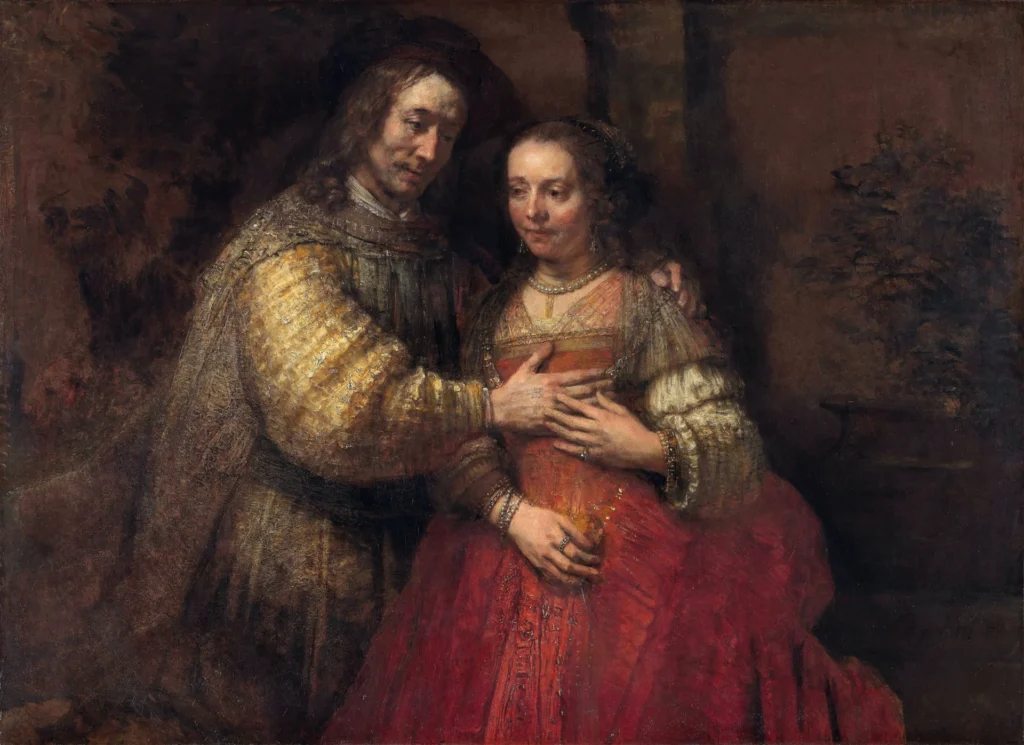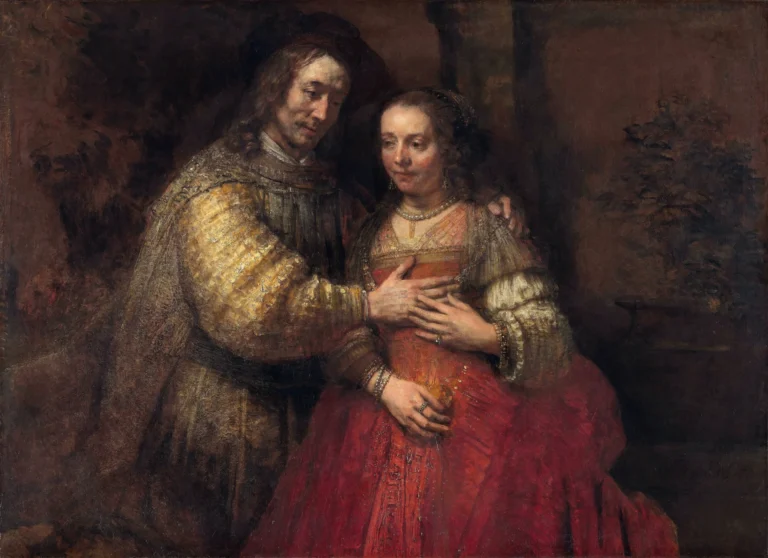The Jewish Bride
Rembrandt van Rijn's The Jewish Bride is an exquisite oil on canvas painting, created between 1665 and 1669. It depicts an intimate moment between a couple, possibly drawing from Old Testament characters or Rembrandt's own life. Known for its exceptional use of light and shadow, the work presents textured details with a deep emotional resonance, making it a defining work of Baroque art. Its ambiguity in identity enhances its allure, catering to both historic interpretations and personal connections.
Circa 1665-1669
About the Artwork
The Jewish Bride was painted during a time of immense creativity in the Dutch art scene, which of course includes Rembrandt's own evolutionary journey as an artist. The identity of the couple in the painting remains a topic of debate; some believe they represent biblical figures like Isaac and Rebekah, while others speculate they are close to the artist’s personal life. The painting’s original title, given by a 19th-century collector, suggests a festive wedding scene, but today, it's viewed more as an exploration of intimate relationships. The work's intricate details and emotional depth mark it as one of Rembrandt's most significant contributions, reflecting not only the artist's technical prowess but also his understanding of human connections.
Did You Know
Renowned artist Vincent van Gogh expressed deep admiration for The Jewish Bride. highlighting its emotional depth and artistic quality, which influenced his own work.
The identities of the couple depicted in the painting remain uncertain even today, with various interpretations ranging from biblical figures to personal representations of Rembrandt’s own family.
Rembrandt employed his signature chiaroscuro technique in The Jewish Bride. masterfully balancing light and shadow to evoke deep emotional resonance and highlight the intricate textures of the clothing.










